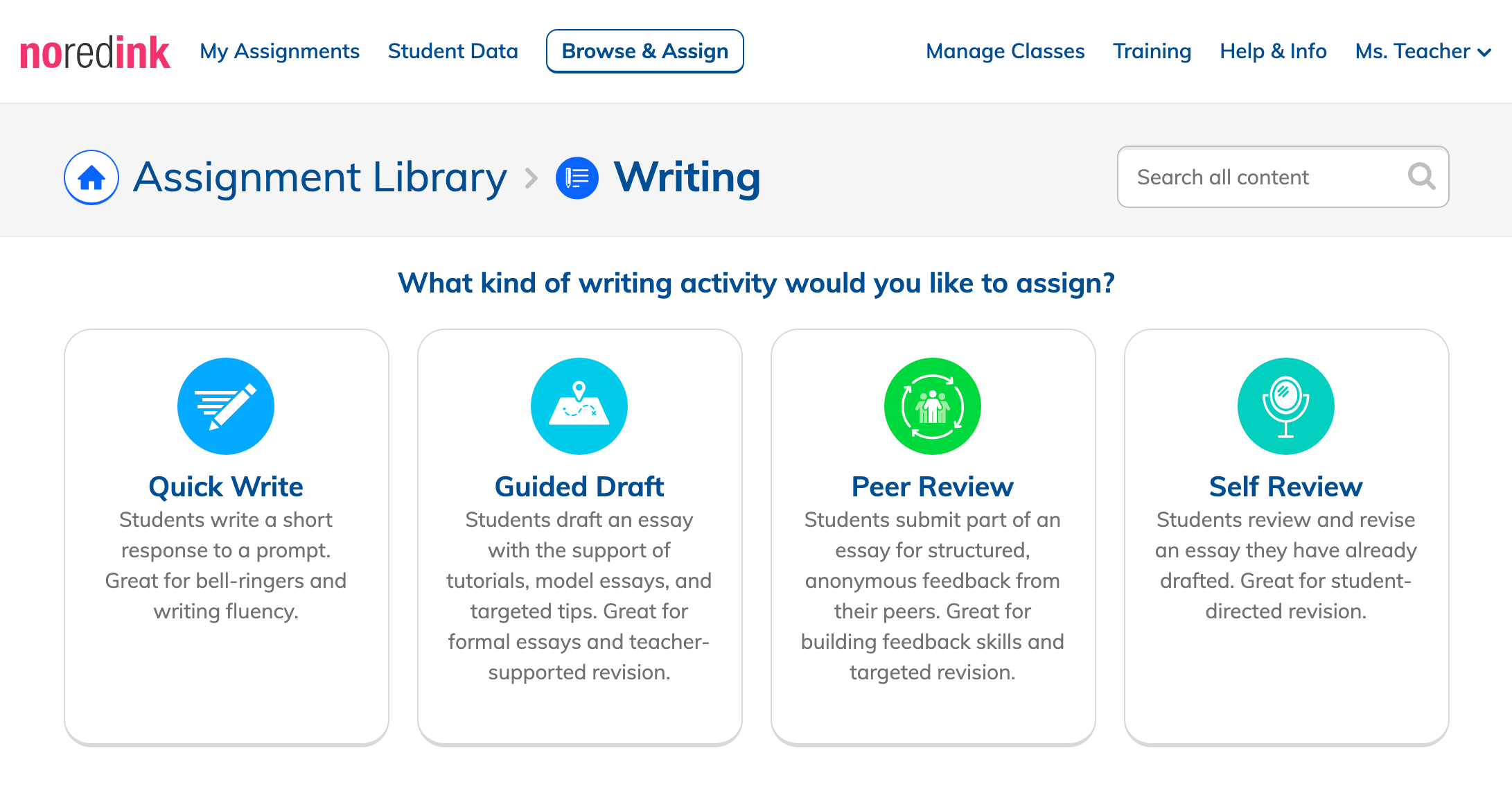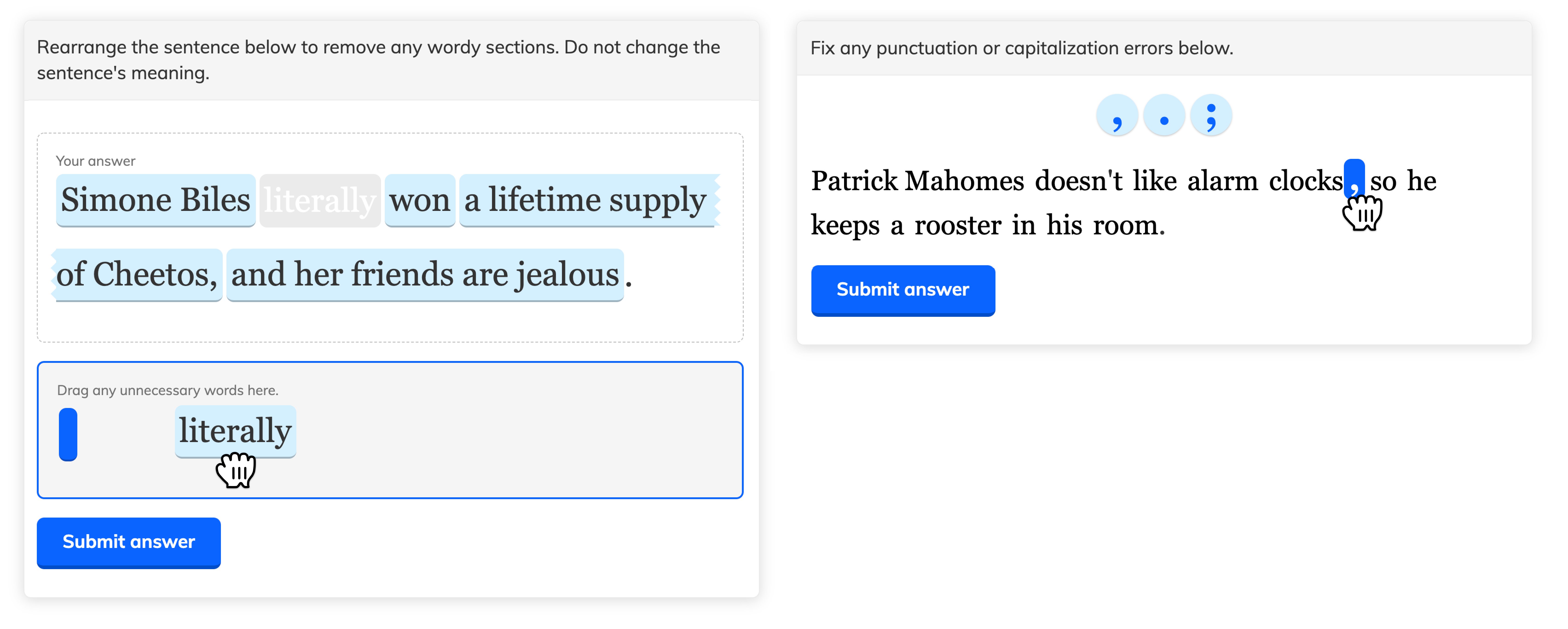News: NoRedInk raises $50 million Series B to help students become better writers
“In order to become a better writer, read your written words out loud.” That’s one of the first, and best, writing tips I ever received. I always found the advice ironic because it required me to change the medium of my writing to become a better writer. Still, all these years later, it’s true: vocalizing
“In order to become a better writer, read your written words out loud.”
That’s one of the first, and best, writing tips I ever received. I always found the advice ironic because it required me to change the medium of my writing to become a better writer. Still, all these years later, it’s true: vocalizing your words helps identify typos and incomplete thoughts, but also notice more subtle things like awkward turns of phrases or a weird rhythm in your sentence structure. Best of all, if you find yourself bored of your own text while reading out loud, you know readers will be, too.
This is all to say that writing, even for those who love writing, is a deeply human art built on top of nonobvious rules. While those complications don’t exactly scream for a tech solution, NoRedInk, a San Francisco-based startup, has spent nearly a decade trying to help students get better at their writing through software.
NoRedInk announced today that its digital writing curriculum, which pairs adaptive learning with Mad Libs-style prompts, has helped it raise a $50 million Series B led by Susquehanna Growth Equity, with participation from True Ventures. Other investors in the company include GSV, Rethink Education and Kapor Capital.
The financing event comes nearly six years after its Series A, a signal that the company has ambition to scale meaningfully in the coming months and years. With millions more, though, NoRedInk has to address its biggest challenge: the intricacies of the subject matter that it wants to make simple.
Founder and CEO Jeff Scheur built NoRedInk in 2012 when he was an English teacher in Chicago. The site served as a way to help kids get more than “red ink” on their papers, a nod at how teachers often use red ink to mark corrections and suggestions on assignments.
“Kids get feedback on their paper and they have no idea what to do with it,” Scheur said. “They see the grade, but they tend to just throw it out… so I figured out how to help them apply very difficult-to-learn skills that we expect kids to know, but don’t explicitly teach them.”
Since launch, NoRedInk’s goal is to help students with writing skills ranging from how to structure an essay to how to cut fluff from their arguments to how to cite correctly.

Image Credits: NoRedInk
“One of the great challenges about teaching writing is that we want to demystify the process of becoming a great writer without reducing the art form of expression,” he said. “So that means providing kids with lots of targeted personalized practice, and helping them realize that there’s no one way to write.”
It thus makes sense that NoRedInk uses adaptive learning, an educational method that uses an algorithm to get inputs of learners, such as strength areas or preferences, to create an output that better meets them where they are. After asking students for their favorite characters and role models, NoRedInk creates personalized writing exercises targeting each student’s interests, then guides them through the writing process with light support.

Image Credits: NoRedInk
Scheur described part of the goal of NoRedInk as “breaking down difficult to learn skills with various degrees of scaffolding.”
To date, more than 10 billion exercises have been completed on NoRedInk’s practice engine — which is data the company uses to underscore problem areas, shared struggles and potential blind spots of traditional curriculum for its districts.
NoRedInk has a free-but-limited version of its platform for teachers to try, but offers a full-fledged premium version that integrates with learning management systems and other classrooms to offer a school and district a view of progress.
As the business expands, NoRedInk might need to get deeper into drafts in order to win over market share. Will it ever play the role of suggesting tone the way that AI-based grammar and writing unicorn Grammarly does? For now, it appears not.
“Grammarly is a modern-day spellcheck,” Scheur said. “NoRedInk is very different; it’s what schools and districts use to teach skills.”



